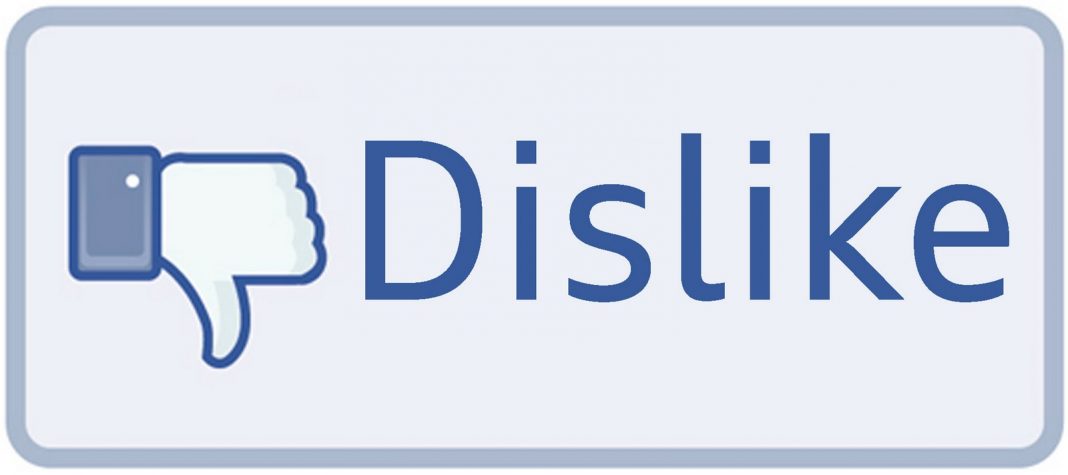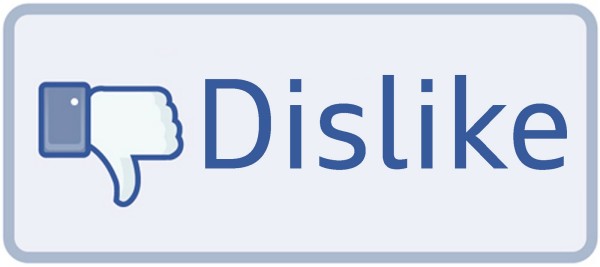
Long have Facebook users been clamoring for a Dislike button. This author is one of them. If there are posts that we like, it’s only natural to dislike some. Not everything on Facebook is likeable. Users have the freedom to post whatever they like including some that are against Facebook’s terms of use, and those posts stay there until admins catch up to them. Some posts are just distasteful, disgusting and some are downright offensive. We can’t exactly like them as that would be sending the wrong signals to everyone else. But we need to show that we do not agree with, nor approve of the post but are helpless to do so. Simply ignoring the post is an invitation for more of the same. Now Facebook has announced that the long sought-after dislike button will be shipped in the near future but has not given the specifics on how it will work. Ever wonder why it has taken so long for Facebook to actually consider it? In a social media environment such as Facebook, implementing a dislike button is not as simple as it seems.
The beauty of the Like button is its ambiguity. We like something or we don’t. We can Like that picture of a beautiful sunset but for someone to Like a picture of a throng of poor Syrian refugees, users need to be crafty to spin the negative to something positive. Turn the picture into a meme saying, ‘Let’s pray or wish these people good fortune.’ That will earn a Like. Displaying the picture plainly without any comment will easily learn a dislike due to the picture’s depressing nature. Perhaps suffering the ambiguity of the Like button may actually be better than what may be ahead should we open a can of worms with the Dislike button.
But first, what are the reasons why people want a dislike button? When we visit our timelines, we are bombarded by dozens of new posts. We like most of them, comment on them but there are times that we don’t like some of them. Many such posts are completely unnecessary only adding to the effort of scrolling status updates. Spam, that’s the word were looking for. Of course, we care for our friends and we want to convey that they’re posting something they shouldn’t that they’re posting things we do not care for or are inadvertently sharing things that shouldn’t be on Facebook at all. Here are some examples of things that social media users do not like.
- Users who share every meal they eat. Do it once, great for you. Do it twice, yay! Do it thrice, that’s nice. Do it again, your deep dish pizza is making my tuna sandwich lame. And another one, hoping you’ll actually get a triple bypass with that triple-bypass-burger of yours!
- Incessant game inviters. Sorry but I don’t have the time. I’m way too busy. I don’t play the genre. Thanks but no thanks. No, I have no idea what you did there. I don’t want to know what your score is.
- Globe-trotters. Not the Harlem team, we love them. It’s folks that share everywhere they go, complete with coordinates. Its fine every once in a while. Good for you. Wow, you’ve been to Disneyworld, Universal Studios, Legoland, San Diego Comic-con, Venice, Paris, the Vatican, atop Mt. Everest, please stop. I can’t even leave New Jersey! This and foodies, kids, is where Facebook envy comes from.
- Cryptic posters. These are the friends that are irate, upset, depressed or just plain bored that post things they only know about. Not everyone within the circle can catch on and are left guessing. We’re all guilty of this every once in a while. But there are other avenues for this, like Twitter!
- Yes, everyone needs to make a buck and need our assistance to do so. Again, this is okay every once in a while but not 24/7. Ignoring will only invite more owls from Hogwarts. Click on Like and Hagrid breaks the door.
- Annoying commenters who comment on everything, like that guy who says hi and how’s your day from across the street who keeps on talking after you’re already past. There are times when these guys comment without knowing what’s going on or rubs you the wrong way. Unfriend? Can’t do that to the poor guy.
- People who post the same thing over and over. Simple as that. And lastly…
- Gore-illas, for lack of a better term, people who post gory stuff like road kill, mangled bodies, rotten food, porn, and extreme violence. Four letters: NSFW.
Now, many folks who post the above actually mean well or just really want to share. Some need attention or just want support. But again, not all posts are like-able and just has to stop. The problem now is what would happen when we click on the dislike button. What if the people who shared their feelings, parts of their lives, asking for support take the dislike as an offense? Disliking itself becomes a risk.
Let’s make Dislike anonymous. Now that has the danger of opening someone to bullying. Trolls would come out from under bridges and dislike even the most pleasant of posts. How about commercial users and celebrity pages? An anonymous Dislike button can become weaponized giving competitors an easy way to attack each other. It’s like on YouTube where people now pay to have a video reported or given thumbs down. If a Facebook dislike makes the post become irrelevant, competitors will have a field day driving down their competition’s posts won’t they?
As much as this author would like to have a dislike button because there’s much to dislike such as news of government corruption, Miley Cyrus’ twerking and her VMA costumes, the Fantastic Four reboot, the Kardashians, doomsday posts, a bad episode of your favorite TV show; the Dislike button is a great risk.
By announcing that one is in the works, maybe Facebook has taken everything in consideration and made the necessary measures to avoid abuse. Otherwise, Facebook users will have to find a way to dislike the dislike button.


